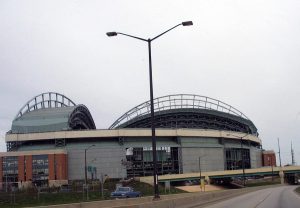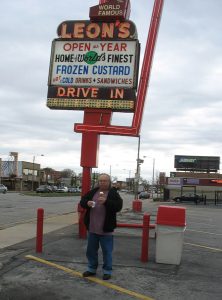Milwaukee, the third most segregated city in America, will host 2020 DNC
It’s just been announced the 2020 Democratic National Convention will be held in my hometown of Milwaukee, WI. The party is doing so because the stalwarts in the Midwest want to shore up their bona fides with the Midwest voters that abandoned Hillary Clinton in 2016.

My first thought was, “The most segregated city in America. I hope they have the guts to address that ‘little’ problem.”
As it turns out, Milwaukee is only the third most segregated city in America, as noted in a study by 24/7 Wall Street. The Detroit, MI area is #2 and the Cleveland, OH area is #1. The irony: The three most segregated cities in America are all in the north. Let that sink in …
The poverty rate for African-Americans in Milwaukee is above 38% and the unemployment rate is above 16%. As compared to white poverty at 7.6% and unemployment of 5.9%.

There were a lot of things going on in Milwaukee back in the 1960s, besides anti-war demonstrations. In fact, there was very little of that. Milwaukee was an industrial town, with factories and foundries working three full shifts seven days a week. Big names too, like Kearny-Trecker, Briggs & Stratton, Allis-Chalmers, Allen-Bradley and of course Harley-Davidson, although they haven’t assembled a motorcycle in Milwaukee in decades.
- — Lest we forget: three of the four largest breweries in the world at that time: Schlitz, Pabst and Miller.
Those were just the biggest. There were too many foundries to name and count here; I worked at three of them: Pelton Casteel, Maynard Steel Casting and the third name escapes me. Those are dirty, dangerous jobs filled with poisonous gasses that kill a person slowly, over time. It’s why we were required to wear masks in certain areas of the plant, like under the deck, shoveling the used coke onto conveyors that took it to mold shops were it was fashioned into new molds for the next job.
The good old days …
If a guy made it to my age now in one of those places, he’d take the early retirement and walk away, secure in the knowledge that his pension — yes, pensions — would take care of him and his wife for decades. He usually wouldn’t last that long because with all the powdery coke and other debris that gets sucked into the lungs — along with any tobacco — life was short. Which is why many workers left the job much earlier than retirement age — for medical disability.

But, they were all good paying jobs with great benefits, like medical/dental and pensions. Who gets a pension anymore? Just about no one. We get stuck with 401/k plans that can go poof in an economic instant, like we saw in 2008.
Most of those jobs left in the early 1980s, thanks to greed and the undercutting by foreign steel. But that’s a different topic.
Also in the 1960s: Father James E. Groppi leading anti-segregation marches across the 16th Street Viaduct. I’ve walked, pedaled a bicycle and driven a car across that viaduct many times and felt the history of that iconic structure. Groppi’s Italian immigrant parents must have been exceedingly proud because one of their sons had become a Catholic Priest. That was a big deal back in the day. I have four brothers and my parents sent me to the same seminary that Groppi attended. Of course he finished his studies and was anointed into the priesthood. I, on the other hand, went for the two-week orientation and was sent back home after 2.5 days, with the priest who drove me home telling my parents, “He’s not meant for the priesthood.”
Something tells me I should be ashamed, or at least have some resentment about not even making it through the orientation, but I always viewed it as dodging a howitzer shell.
My mom was pretty broken up about it though. I do feel bad for her.

Anyway, Groppi (and I briefly) attended the St. Lawrence Seminary and then Groppi (not me) graduated from St. Francis Seminary as an ordained Catholic priest.
Besides leading marches across the 16th Street Viaduct, he picketed the homes of judges who were members of the Fraternal Order of Eagles, a group that did not allow African-Americans to join. I imagine some could have had jobs working in the kitchen, or on the janitorial staff, all good jobs, but far short of being allowed to become a member, an equal member with the others.
If you’re wondering what the 16th Street Viaduct — now named the James E. Groppi Unity Bridge — was all about, it crossed the Menomonee River Valley, the de facto division between the Northside of Milwaukee, where Blacks were allowed to live and the Southside of Milwaukee, which was white folks only. Well, the near Southside, from about 16th Street east to First Street, was (is) Hispanic. The old Sixth Street Gang was known to be a Hispanic gang and god forbid you get jumped by them. They all carried switchblades!

The shit we hear and believe when we’re growing up, despite the evidence to the contrary. I don’t know how many times I rode that Sixth Street bus line without incident. High school rivalries were a bigger threat, especially between Alexander Hamilton High and Casimir Pulaski High. But that is how racial prejudice gets passed from one generation to another. I would bet there are still scary stories about the Sixth Street Gang. And about Black people invading the Southside. “I’m not prejudiced but …”
Back to Father Groppi and the segregation of Milwaukee. Because of what he and the Black community did in the 1960a, Milwaukee passed an open housing law … which had more holes than Swiss cheese. For years afterward community groups would have sting operations to uncover the practice of redlining, which is the act of pushing certain groups of people into buying homes in specified areas and out of other specified areas. Like, no Black people south of the Menomonee River.
Apparently it is still true today, 52 years after Father James E. Groppi and the NAACP Youth Council marched across the 16th Street Viaduct for fair housing and other civil rights. I left there 27 years ago and it was true then. Now, the Democratic Party is going to hold its 2020 convention in the Cream City. I’m happy for Milwaukee because it needs all the good news it can get. But it is also indicative of all the issues facing America now: under employment, unemployment, the decline of the manufacturing base — racism. Just inequality in general, from gender to economic. In Milwaukee the Democratic Party will have the chance to speak to all of these issues, in the stewing petri dish of America’s third most segregated city.

Thirty-five years ago there were over 750,000 residents of Milwaukee. Now the population is under 600,000. That’s one way to illustrate the decline of the Middle Class. Those people didn’t leave to find higher paying jobs, they left to find some kind of work that could come close to paying a living wage.
Milwaukee could be a great place for the convention, if they use the moment and the local conditions for the right purposes. But, it is the Democratic Party. As was proven in 2016, they know how to snatch defeat from the jaws of victory and something lurks in my inner pessimist that insists they will do the same with this opportunity.
Top photo: “The Calling” by Mark di Suvero, in front of the Milwaukee Art Museum (Tim Forkes)

Tim Forkes started as a writer on a small alternative college newspaper in Milwaukee called the Crazy Shepherd. Writing about entertainment issues, he had the opportunity to speak with many people in show business, from the very famous to the people struggling to find an audience. In 1992 Tim moved to San Diego, CA and pursued other interests, but remained a freelance writer. Upon arrival in Southern California he was struck by how the business of government and business was so intertwined, far more so than he had witnessed in Wisconsin. His interest in entertainment began to wane and the business of politics took its place. He had always been interested in politics, his mother had been a Democratic Party official in Milwaukee, WI, so he sat down to dinner with many of Wisconsin’s greatest political names of the 20th Century: William Proxmire and Clem Zablocki chief among them. As a Marine Corps veteran, Tim has a great interest in veteran affairs, primarily as they relate to the men and women serving and their families. As far as Tim is concerned, the military-industrial complex has enough support. How the men and women who serve are treated is reprehensible, while in the military and especially once they become veterans. Tim would like to help change that reality.
